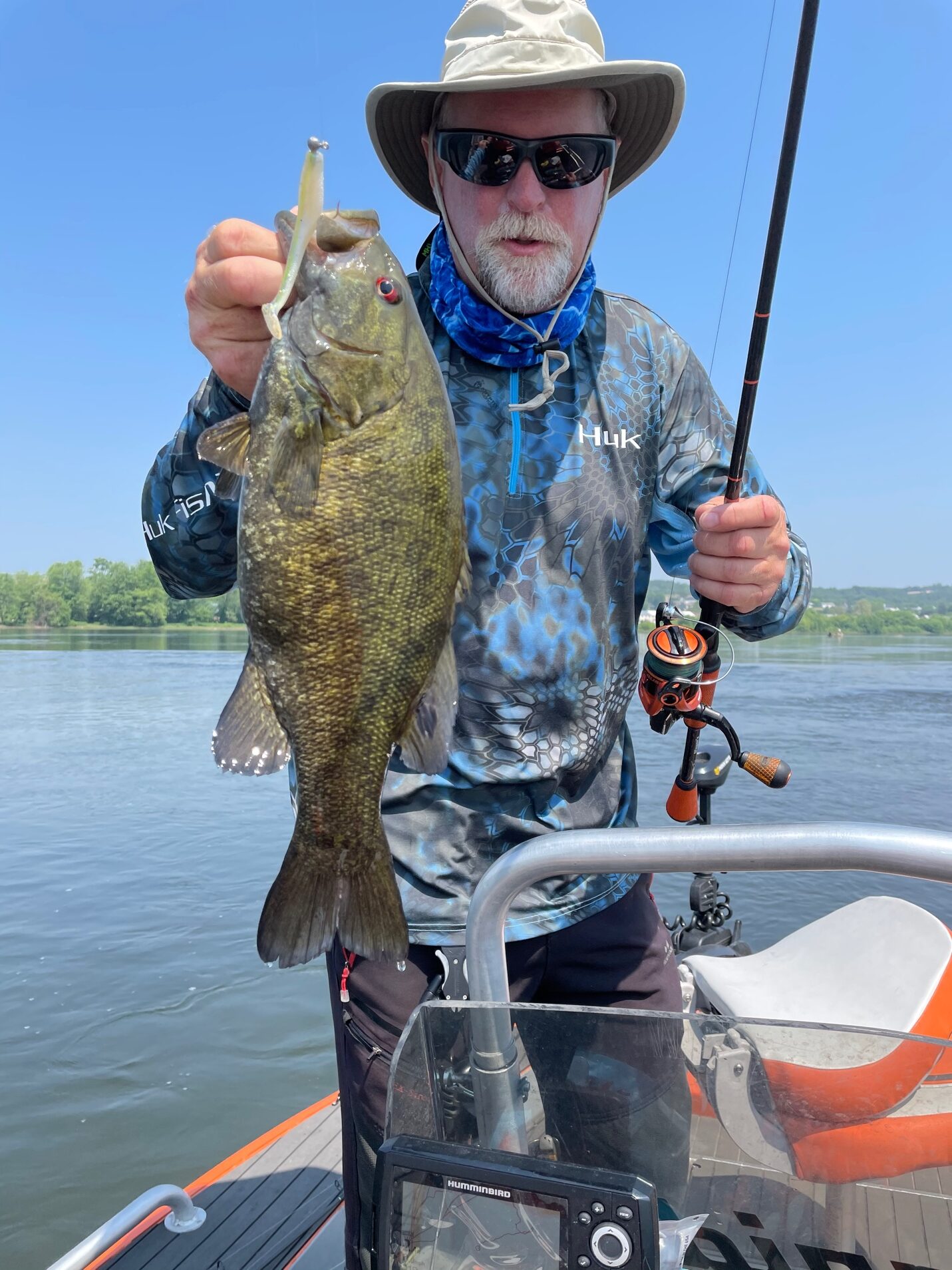As we enter the month of May, at least here in the northeast, smallmouth bass are operating in various stages of post spawn. For anglers wishing to avoid bass bedding areas, there is a better way to catch plenty of bass without picking on those smaller male bass guarding nests.
Depending on the source, most biologists believe that only 60-70% of the adult population participate in the annual spawn. Another aspect to the spawn, at least in rivers, is that the bass do not all spawn at once. Generally, the largest, most mature females release their eggs first. A second note is that after the female spawns, she goes off to hide, eat and regain strength for a few days. This is generally when they are most vulnerable.
Once she recovers, she is off to her favorite ambush areas in or near current. So, we have a new group of large females coming into these current or ambush areas daily.
Between the bass who do not participate, and the females that recover daily, this leaves about no less than 40% of the adult population out and about. This is our target group.
Prior to now, most anglers have been fishing since ice out and have targeted bass from wintering areas and into spring feeding areas. Due to the cold water, a slower approach is generally taken. Meaning, slower presentations in deeper water to match the water temp. Soft-plastic jigs, such as the Fitt Chillee Willee tubes, or a jerkbait using longer pauses. As water temps climb into the 50’s and low 60’s, bass start to pair up and enter spawning areas. Anglers wanting to catch bass, but leave bedding areas alone, must take a different approach. Switching gears some during the spawn and early weeks of post spawn is what I am going to ask you to try. It is as simple as this; “Let the bass chase you!”
We are going to abandon tight cover and protected still water areas and focus all our attention on stronger current and current seams.
Our approach is moving baits such as spinnerbaits, chatterbaits, crankbaits and swimbaits. It is not 100% power fishing, although anglers are going to cover a fair amount of water and do a lot of casting.
Actively targeting feeding areas in current and off current seams will help anglers to target bass that are no longer engaged in the spawn. Best of all, these actively feeding bass are going to chase lures down. So, the more casts made, the more the likelihood of catching the eye of a feeding bass or better yet, a group of feeding bass.
Crankbaits
Bouncing a square bill off rocks in modest current triggers bass. And once that vibration and movement catch their eye, the chase is on. For the Susquehanna River, I prefer crankbait patterns and colors that resemble crayfish. As the water warms into the 50’s, crayfish become active. Imitating a crayfish trying to escape is a vision few smallmouth can resist.
Spinnerbaits
Late spring, I like to burn or lift spinnerbaits so they roll just under the surface. Clients are often amazed at how well spinnerbaits work in shallow current and riffle areas that seem impossible of hiding a giant bass. And yet, many of my trophy bass come out of these shallow riffles and current seams. Bright sun, shallow current and the flash of a gold blade is all anglers need to connect with smallmouth in the latter months of spring and early summer.
Chatterbaits
If you are not throwing chatterbaits, you need to. The Susquehanna River is loaded with emerging grass beds and exposed rocks. Both structures create current seams at the top and sides of these often odd shaped structures. Feeding bass lie in wait along these structures and a chatterbait comes through these with relative ease. Craw or Minnow trailers are suggested and there is a large variety of them to choose from.
Swimbaits
One of my favorite chase baits is a swim bait. The host of colors, sizes and shapes make for almost endless possibilities. The ease in throwing them makes this an incredible lure choice. They can be rigged on a weedless offset hook, combined with an underspin or an overspin rig, or just fished on a ball head. Jig weights as light as 1/16th ounce to well up to (and over) 3/8th ounce to cover any conditions anglers find themselves in. A slow drag off the bottom, to burning them through current simply generates strikes when few other soft plastics can.
So, this May, instead of chasing smallmouth, let them chase you instead. I guarantee it will be an experience you will want to repeat!
Author Chris Gorsuch is a licensed charter guide in the state of Pennsylvania. He started the Reel River Adventures guide service in ‘07 and spends 225-250 days on the water annually. His home base is on the Susquehanna River where he operates 20’ jetboats.You can follow his daily fishing reports on Facebook ‘Reel River Adventures-RRA’ & Instagram @Chris_Gorsuch



